Description
The Meggitt Vibro-Meter 200-510-017-019 is a Machinery Protection Card (MPC4) from the VM600 series, designed for high-precision vibration and speed monitoring of critical rotating equipment in industrial automation environments. As a robust, multi-channel module, it addresses the challenges of detecting subtle mechanical faults—such as bearing wear, shaft misalignment, or rotor imbalances—that could lead to catastrophic failures, costly downtime, or safety hazards. Below, I provide a comprehensive analysis of its role in process control, technical specifications, and operational context, tailored to your interest in industrial automation components like the previously discussed Allen-Bradley, B&R, and ProSoft modules.
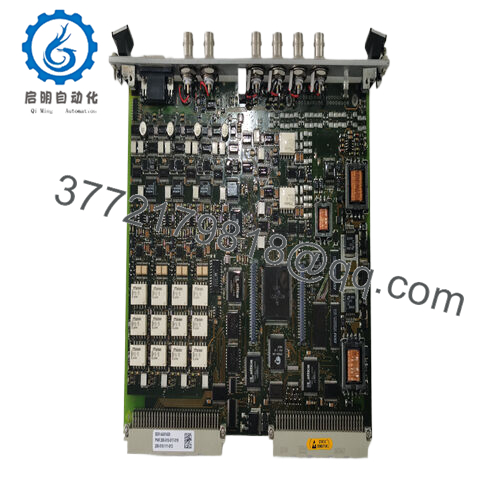
- 200-510-017-019 200-510-111-013 VM600 MPC4
- 200-510-017-019 200-510-111-013 VM600 MPC4
Role in Industrial Automation
In high-stakes industrial settings, where early fault detection in machinery like turbines, compressors, or pumps is critical to maintaining operational continuity, engineers often face issues with monitoring systems that lack channel flexibility, succumb to electrical noise, or fail to integrate seamlessly with existing control architectures. The Meggitt Vibro-Meter 200-510-017-019 tackles these by delivering precise, multi-channel vibration analysis with integrated speed monitoring, ensuring high reliability for process control. For example, in a petrochemical plant’s centrifugal compressor, this card might monitor radial vibrations to detect a 15 mm/s RMS anomaly, triggering an alarm to prevent seal damage or gas leaks that could halt production for days and incur millions in losses. Its ability to process I/O signals with minimal latency supports critical system uptime, making it indispensable in environments demanding SIL 2 compliance per IEC 61508.
The Meggitt Vibro-Meter 200-510-017-019 excels in applications requiring modular integration, such as power generation or marine propulsion, where its four dynamic channels and two tachometer inputs handle diverse sensors (e.g., accelerometers, proximity probes) without external signal conditioners. By embedding DSP-based algorithms for RMS averaging, peak detection, and phase referencing, it offloads complex analytics from the host PLC, aligning with goals of streamlined diagnostics and predictive maintenance. In harsh environments with EMI or thermal cycling, its galvanic isolation and rugged design prevent false alarms from ground loops or temperature-induced drifts, ensuring I/O signal accuracy. Keywords like “industrial automation,” “process control,” “I/O signal,” and “high reliability” define its essence—the Meggitt Vibro-Meter 200-510-017-019 transforms raw vibration data into actionable protection, reducing engineering effort for sensor calibration and enabling fault-tolerant operations in setups where machine health directly impacts throughput and safety.
Technical Positioning and Operation
The Meggitt Vibro-Meter 200-510-017-019 integrates into a VM600 19-inch rack (e.g., ABE040 or ABE042), occupying a single slot and interfacing via the rack’s backplane to collaborate with modules like the CPUM for communication or IOC4T for relay outputs, forming a scalable protection system. Positioned in the condition monitoring and protection layer of the automation stack, it processes up to four dynamic inputs (e.g., from TQ402 proximity probes or CA202 accelerometers) and two speed/tachometer channels, applying configurable filters (10 Hz to 10 kHz) and integration for metrics like velocity (mm/s), displacement (µm), or acceleration (g). It outputs processed data via 4-20 mA, voltage signals, or Form C relays, while feeding raw buffered signals through front-panel BNC connectors for external analyzers, all synchronized with the rack CPU at 100 ms scan cycles.
In a practical setup, the card supports hot-swapping for maintenance without rack shutdowns, and its jumper-selectable input ranges adapt to sensor types (e.g., 100 mV/g for accelerometers) without firmware updates. For instance, in a steam turbine application, it might monitor bearing vibrations and shaft speed, detecting a 10 mm/s peak via RMS averaging and triggering a Warning relay if thresholds per ISO 10816 are breached, while providing phase data for orbit analysis in VibroSight software. Its 500 Vrms channel isolation prevents crosstalk in noisy grids, and diagnostic LEDs flag sensor faults or wiring issues, reportable via Modbus TCP or Profibus to PLCs like Allen-Bradley ControlLogix or B&R systems. This streamlined architecture reduces cabling complexity and enhances compatibility with distributed control systems, allowing engineers to prioritize alarm logic over signal conditioning in the broader process control framework.
| Specification | Details |
|---|---|
| Model Number | 200-510-017-019 |
| Brand | Meggitt Vibro-Meter |
| Type | MPC4 Machinery Protection Card |
| Input Voltage | 24 VDC (18-32 VDC via rack PSU) |
| Operating Temp Range | -25 to +65°C |
| Mounting Style | 19-inch rack slot (VM600 series) |
| Dimensions | 100mm (H) x 160mm (W) x 20mm (D) |
| Weight | 0.3 kg |
| Interface/Bus | VM600 backplane, BNC/screw terminals |
| Compliance | CE, ATEX Zone 2, API 670, IEC 61508 (SIL 2 capable) |
| Supported Protocols | Modbus TCP, Profibus (via CPUM) |
| Typical Power Draw | 5 W |
Key Benefits and Applications
Selecting the Meggitt Vibro-Meter 200-510-017-019 equips your system with a protection cornerstone designed for relentless accuracy, where its 16-bit A/D conversion and 10 kHz bandwidth capture transient faults like gear mesh harmonics, ensuring long-term performance by flagging anomalies before they escalate to 20 mm/s failures. In operation, this translates to turbines maintaining balance within 0.2 mm/s RMS, enabling predictive scheduling that cuts maintenance costs by 25%—critical for processes where downtime impacts revenue or regulatory compliance.
Its modular integration simplifies deployments, as plug-and-play rack compatibility and VibroSight configuration reduce setup time by up to 50% in multi-sensor arrays, while hot-swapping supports live expansions without halting logic. Maintenance is efficient: self-diagnostic routines and bus-reported faults enable remote resets, with channel swaps taking under 15 minutes, aligning with sub-hour MTTR goals in uptime-sensitive plants. For facilities bridging legacy and modern systems, this card elevates vibration monitoring into a proactive shield, supporting high reliability and adherence to standards like API 670 without rack proliferation.
- Power Generation: Tracks rotor vibrations in gas turbines, using TQ402 probes in 60°C, EMI-heavy housings to ensure high reliability for process control—prevents bearing rubs via early 15 mm/s alerts, sustaining critical system uptime.
- Oil and Gas: Monitors compressor shaft positions in offshore skids, with ATEX Zone 2 compliance and 100 mV/g inputs—upholds process control precision, averting seal leaks in volatile atmospheres.
- Pulp and Paper: Measures refiner vibrations in humid, fibrous mills, sampling CA202 accelerometers for 10 kHz fault detection—delivers high reliability, optimizing pulp consistency without shear-induced stops.
Related Components
- 200-510-076-114: Enhanced MPC4 variant with adjusted filtering for high-frequency applications.
- 200-510-111-034: CPUM processor module for Modbus/Profibus integration with MPC4.
- 200-560-000-114: IOC4T card for additional relay outputs and signal buffering.
- TQ402: Eddy-current proximity probe for shaft displacement monitoring.
- CA202: Piezoelectric accelerometer for casing vibration inputs.
- ABE040: 19-inch VM600 rack chassis for multi-card setups.
- RPS6U: Redundant power supply for stable 24 VDC rack operation.
Installation and Maintenance
Before Installation:
- Confirm rack firmware (v10 or later via VibroSight) aligns with card revision to prevent bus errors.
- Test sensor wiring (e.g., TQ402 probes) for <0.5 ohm resistance using a loop tester to ensure signal clarity.
- Verify 24 VDC supply ripple below 100 mV via oscilloscope, and torque BNC/screw terminals to 0.6 Nm for vibration resistance.
- In ATEX Zone 2 areas, apply compliant labels and ground rack to <0.1 ohm per IEC 60079-14.
- Calibrate inputs with a shaker table at 100 mV/g, validating 20 mm/s range for ISO 10816 compliance.
Maintenance:
- Monthly: Inspect LEDs for green OK status; extract logs via VibroSight if faults flash—reset transients via software, noting recurrences for sensor health.
- Quarterly: Clean BNC terminals in humid zones with contact cleaner; verify channel isolation >500 V with a megger.
- Annually: Simulate 15 mm/s vibration spikes offline to confirm relay response under 150 ms, per API 670 routines, avoiding live disruptions.
- These practices maintain high reliability without rack downtime.

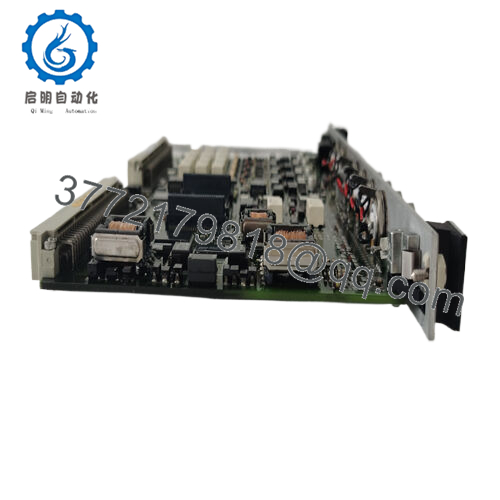
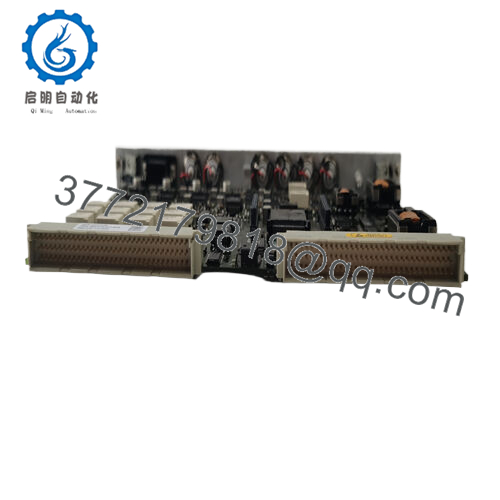
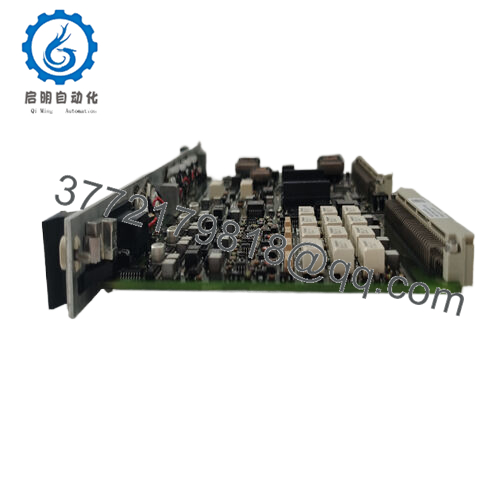
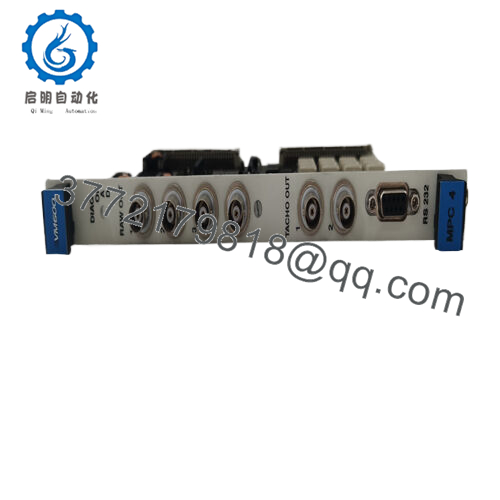
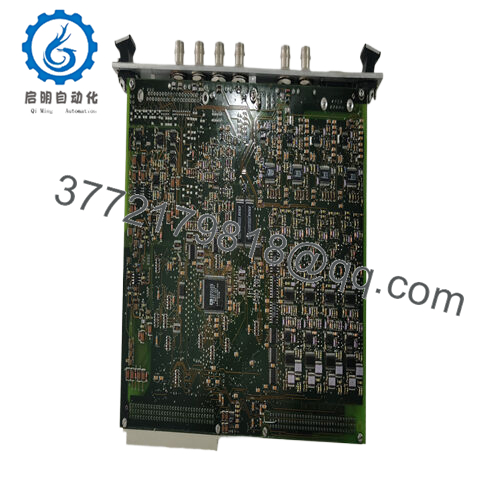
 WhatsApp: +86 16626708626
WhatsApp: +86 16626708626 Email:
Email:  Phone: +86 16626708626
Phone: +86 16626708626


